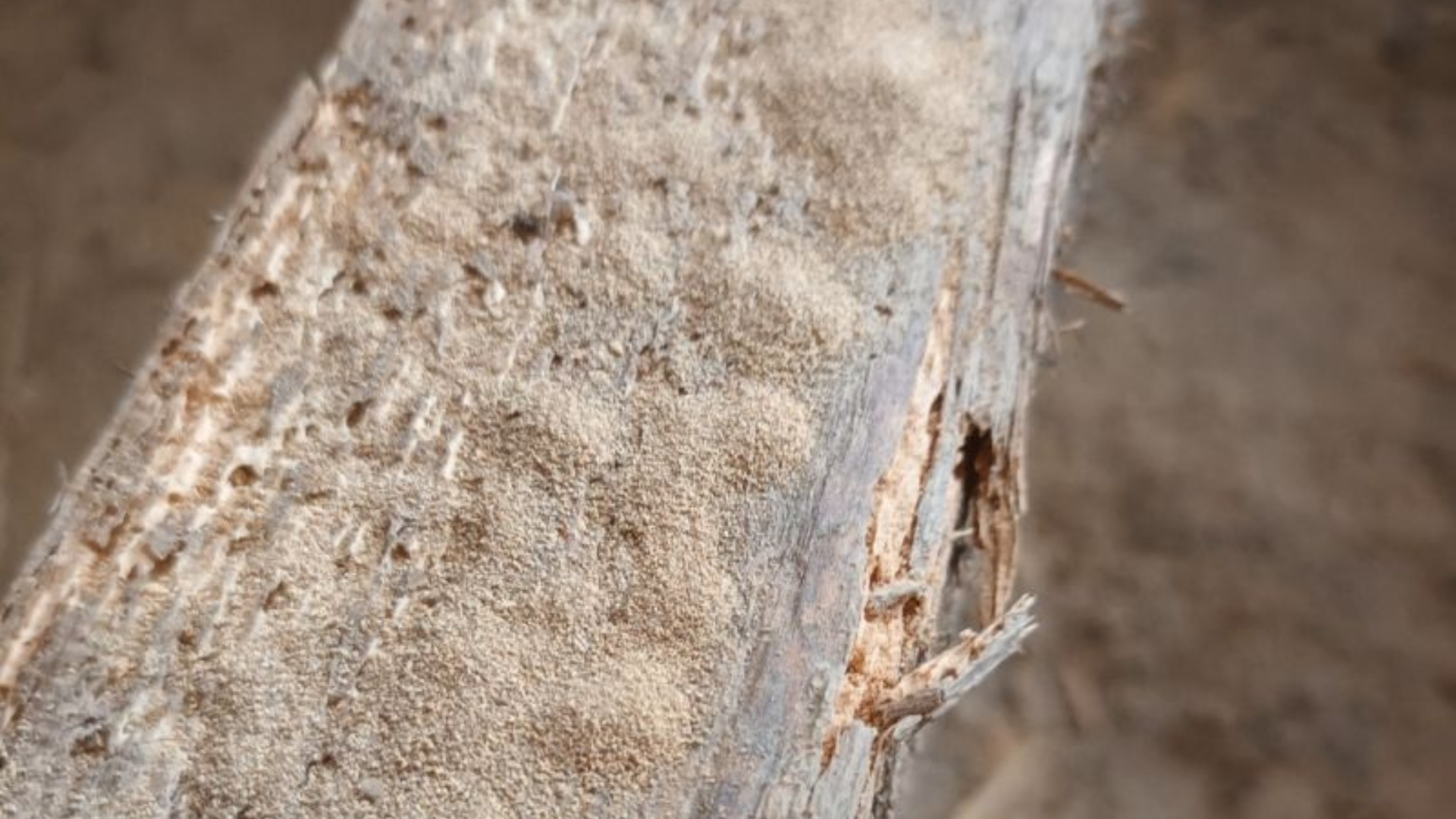Interestingly, the term woodworm is the common name to all wood boring types of insect, one of which we see regularly – the common furniture beetle. Woodworm refers to the larvae of the flying insect, which bore into the wood, leaving those tell-tale signs of infestation.
Tell-tale signs include tiny holes in your floorboards or roof timbers (for example), accompanied by little piles of wood dust. A large-scale infestation may cause the timber to appear to the homeowner as if affected by
timber rot as the damage caused can be quite extensive.
Contrary to the name, the common furniture beetle prefers structural timbers with a slightly damp environment meaning many period homes, particularly those with suspended flooring could be affected and require
timber treatment.
When is woodworm most problematic?
The adult furniture beetle lays it’s eggs in tiny crevice’s within the wood of your home, which begin to hatch into larvae between September and April.
It is the larvae which are the most destructive as they bore into the wood, literally eating their way through your home’s timbers.
Once they grow into adult beetles, they begin to search for a mate and the process starts all over again, taking a serious toll on untreated timber.
When is the best time for timber treatment?
The most effective time to treat woodworm is during the larvae stage, so any time between September and April.
This prevents the woodworm reaching the mating phase of their lifecycle and so prevents reinfestation. As the adults are a flying insect, they may avoid treatment and return at a later stage.
However, before treatment can begin it is imperative to locate the source of the infestation by removing carpeting and any intervening roof insulation so a surveyor can make an assessment.
For the most part, and other than in exceptional circumstances timber infestation can be very successfully treated with an insecticidal liquid, applied with a brush. Different species require different timber treatments, but most are highly effective at remedying the problem and preventing further infestation.
Can you replace woodworm-infested timber?
In extreme cases, where the damaged caused by the insects is extensive, the timbers can be replaced. These are pre-treated to protect them, but it also strongly advisable to survey the other areas in the home where timber structures are present.
Property Conservation Services offers a free timber treatment survey, all you need to do is complete the
contact form with a brief description of your concerns and we’ll et back to you with availability.

